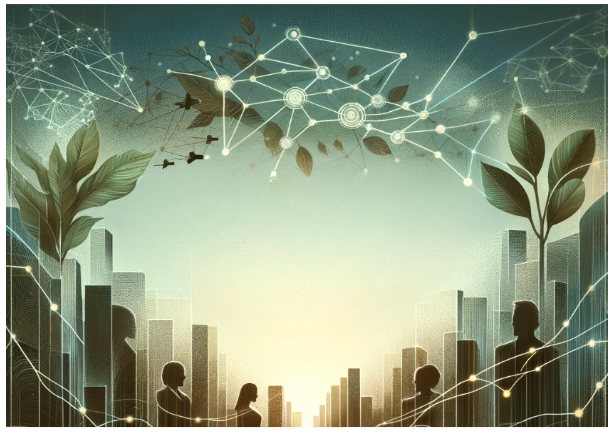In today’s interconnected business landscape, the strength of relationships can make or break an organization’s success. However, managing the complex web of internal teams, partner networks, customer connections, and stakeholders remains an immense challenge. Fortunately, by cultivating relationship resilience – the ability to withstand and thrive through external volatility – leaders can unlock immense strategic value.
The Foundations of Relationship Resilience
At its core, relationship resilience depends on authenticity in connecting with people. Business leaders who communicate transparently and remain true to their values tend to earn others’ trust and loyalty more profoundly. A 2022 study found that 87% of employees feel motivated to excel when they respect and believe in their organization’s leadership. Authenticity establishes credibility and psychological safety across relationships.
Additionally, taking a “value-centric” rather than self-interested approach to relationships proves essential. This involves genuinely listening to understand others’ goals and perspectives, then seeking win-win ways to collaborate. Leaders should acknowledge partners’ and team members’ efforts, provide developmental support and focus conversations on adding value rather than extracting it.
The Power of Storytelling & Collaboration
Storytelling represents a uniquely potent relationship-building tool. Crafting compelling narratives that resonate with audiences fosters emotional connections and sways hearts and minds far more deeply than facts or figures alone. On average, stories generate 70% higher engagement than factual statements.
Leaders should share their organization’s origin story and vision to inspire while collecting employees’ and customers’ first-hand stories to inform strategy. This story-driven collaboration builds camaraderie and ensures relationships evolve dynamically with people’s real needs.
CRM Technology’s Transformative Impact
Customer relationship management (CRM) technology provides invaluable infrastructure for managing connections at scale. On average, CRM systems can increase conversion rates by 300%, boost agent productivity by 21%, and are considered essential for hitting revenue goals by 92% of users.
In particular, CRM empowers teams to automate mundane relationship maintenance tasks like follow-ups, freeing more time for high-value activities like customer segmentation and personalization. Streamlined visibility into integrated data, conversations, and insights helps align entire organizations around relationship-building.
However, technology alone cannot drive resilience without a genuine human focus on compassionate communication tailored to individual needs. Leaders must continue prioritizing empathy, active listening, and understanding over rote technological transactions.
The Path Toward Mastery
Achieving relationship resilience that withstands market volatility requires dedicating oneself to continuous mastery across three key dimensions:
- Build authenticity through transparency, vulnerability, and adherence to values despite external pressures.
- Prioritize mutual understanding and shared goals over self-interest in all partnerships.
- Harness unifying narratives and collaborative technologies to align organizations dynamically to evolving human needs.
By internalizing resilience capabilities, leaders can navigate business relationships smoothly through stormy seas toward renewed growth. Even amidst disruption, the surest path ahead remains to build one life-giving connection at a time.
Forging Resilience Through Change Management
Of course, strengthening relationship resilience requires transformational change management across complex systems. Leaders must break down silos, upskill workforces in emotional intelligence, overhaul outdated communication channels, and modernize technological infrastructure through CRM integration.
This demands an agile, experimental mindset focused on continuous improvement powered by transparency regarding both AI wins and failures. Although disruption initially decreases productivity, leaders should frame it as growing pains necessary for the organization to mature.
Reward structures may need realignment from pure revenue targets toward compensation for collaboration, empathy, and resource sharing across departments. Leaders should phase in changes gradually while soliciting feedback often to smooth the transition.
External Partnership Resilience
Beyond internal relationships, external partnership resilience represents an immense source of strategic advantage. Leaders should identify partner compatibility beyond financials based on aligned values, complementary capabilities, and cultural synchronicity.
Joint narrative-building activities like sharing origin stories, co-creating vision statements, and collective team-building exercises help cement mutual understanding as a bulwark against future conflict. Partners should establish regular touchpoints to address friction, improve interfaces, and celebrate shared wins.
Technological integration, such as shared CRM portals and real-time data transparency, builds trust through visibility. This prevents relationship decay over time. Formal contingency planning for scenarios like leadership changes or market volatility gives confidence to weather inevitable storms in collaboration rather than conflict.
By taking a holistic approach – strengthening communication channels, emphasizing skills development, modernizing systems, and planning for disruption – leaders can sustain both internal and external relationship resilience even amidst turbulence. With authentic connections established, organizations can tackle increasing complexity and rapid change confidently together.
The future competitive landscape will demand nothing less than full relationship mastery.



